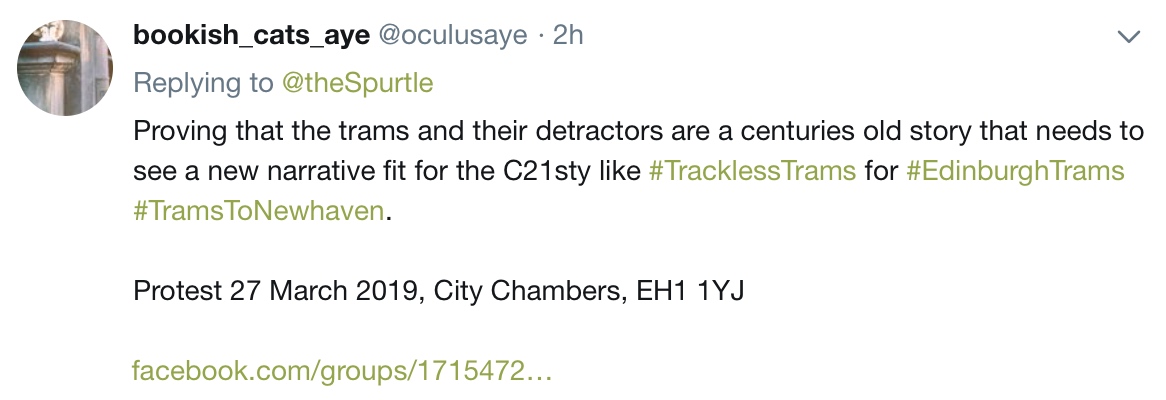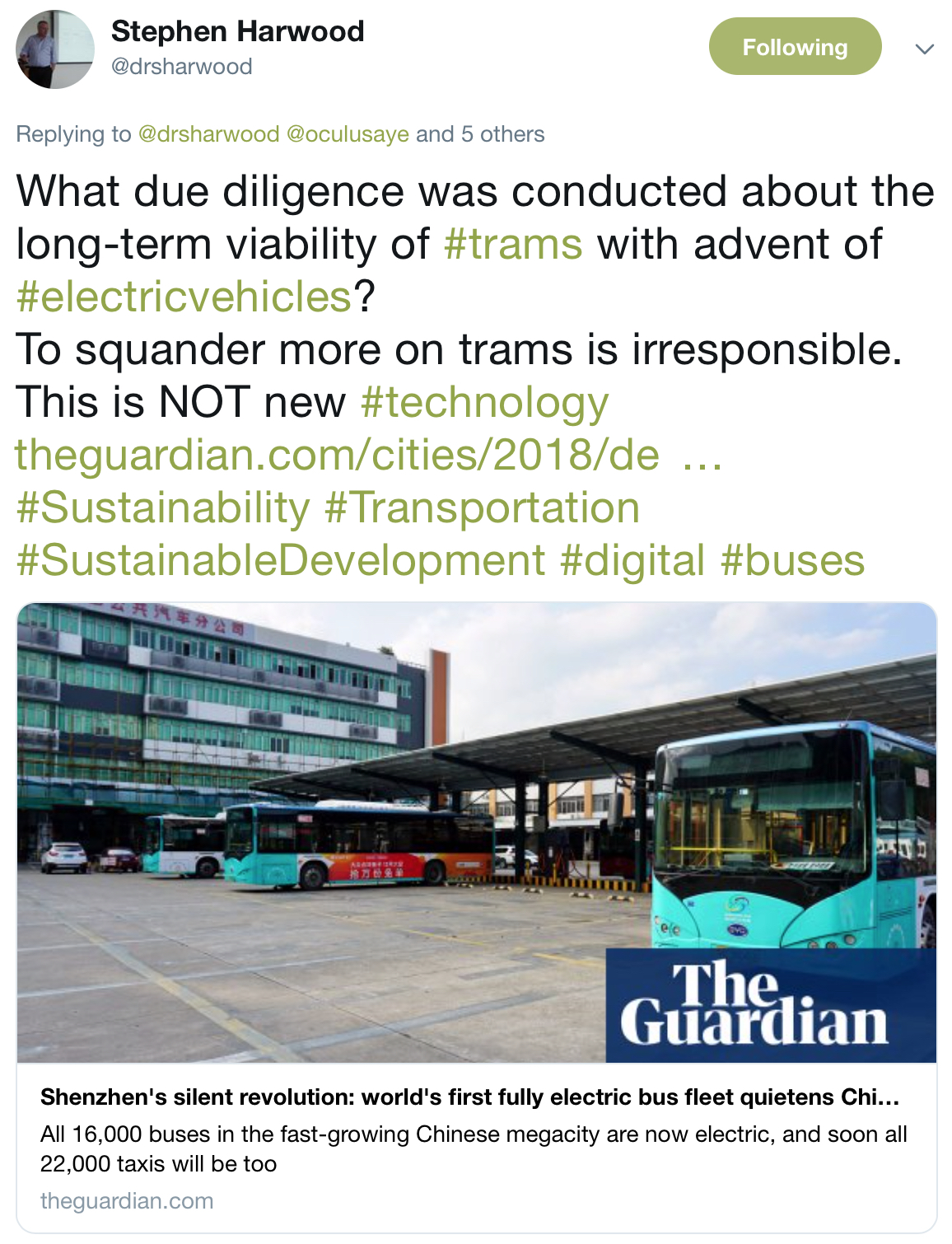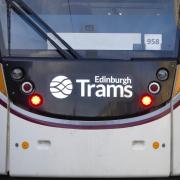
City of Edinburgh councillors are currently considering the business case for extending the tramline to Newhaven.
They will debate a report on the subject at the Transport & Environment Committee on 28 February. This, if approved, will then be discussed and voted upon at a meeting of the full Council on 14 March.
This Spurtle correspondent, although painfully aware of limits to his understanding, is generally in favour of trams, and – so long as the finances stack up – extending the line seems to make sense. It feels like progress.
However, progress is thin on the ground. Edinburgh councillors have been discussing the future of trams for ages, indeed since at least 100 years ago.
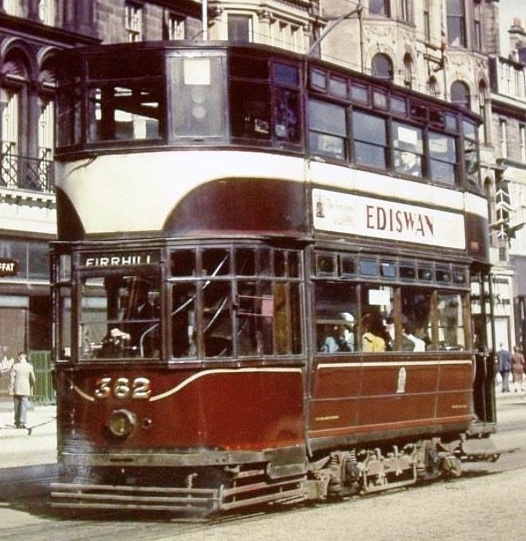
Fast forward to the past
In March 1919, R. Stuart Pilcher, Edinburgh’s Tramway Manager, had produced a report ‘promising in the near future a great improvement and development of the [tram]car service’. He suggested that conversion of the existing system from below-street cable haulage to overhead electric power would usher in a new, convenient, and efficient era of locomotion in the city centre and beyond. Councillors reacted favourably.
As is so often the way, this then prompted an impassioned and voluminous correspondence in the media; particularly, one surmises, among self-appointed experts of a certain age.
Some supported Pilcher’s position. Others preferred the new-fangled alternative of self-propelled motor buses.
Not all the arguments and counter-arguments of 1919 remain relevant. Not all the technical conclusions reached then are true today. But enough of the issues and tones of voice are so startlingly familiar to a modern Edinburgh reader that they merit a second outing.
Below is a selection of the clearest and most entertaining letters (coincidentally, all against the trams) which originally appeared in the Scotsman.
It is worth noting that, despite all the ‘many complications’ rehearsed below, Edinburgh’s elected members eventually opted for an electrified tram system in 1922, which continued in service until 1956. For historical chapter and verse, alight HERE.—AM
*****

Edinburgh, March 12, 1919
SIR,—As the Edinburgh citizens are now beginning to take an interest in their future tramway system, it might be well to remind them that the late Sir William Arrol, the eminent practical engineer, was quite satisfied as to the potentialities of the motor engine as applied to tramway traction. About 25 years ago, before the overhead system was adopted in Glasgow, Sir William Arrol made an offer to the Glasgow Corporation to run self-propelled cars in that city by motor, and proved their practicability by running an experimental car through the streets of Glasgow.
If it had not been for an unfortunate accident to the car, the chances are that Glasgow Corporation would have been the pioneers of that system. At that time the motor engine was in its infancy. The driver of the experimental car allowed petrol to fall on the footboard. This unfortunately caught fire, and no doubt scared the Councillors, and upset the project for the time being.
Need for independent expertise.
Many similar accidents have happened since then, but he would be a bold man to assert that the motor has not come to stay. The achievements of the motor engine in the air, as well as on land and sea, during the last few years seem to indicate that it is the power of the future, and makes the gathering of traction from wires stretched along public streets appear almost childish.
The overhead wire system has no doubt been successful, but it has had a long day. It is more than a quarter of a century since our own Town Councillors rejected it. Surely we can get something better now. What is required is practical advice from independent men. Deputations at best are generally composed of non-practical men, who are shown over the system inspected by an enthusiastic expert, who has no difficulty in convincing them that his system is the best on earth.—I am, &c.
Ratepayer.
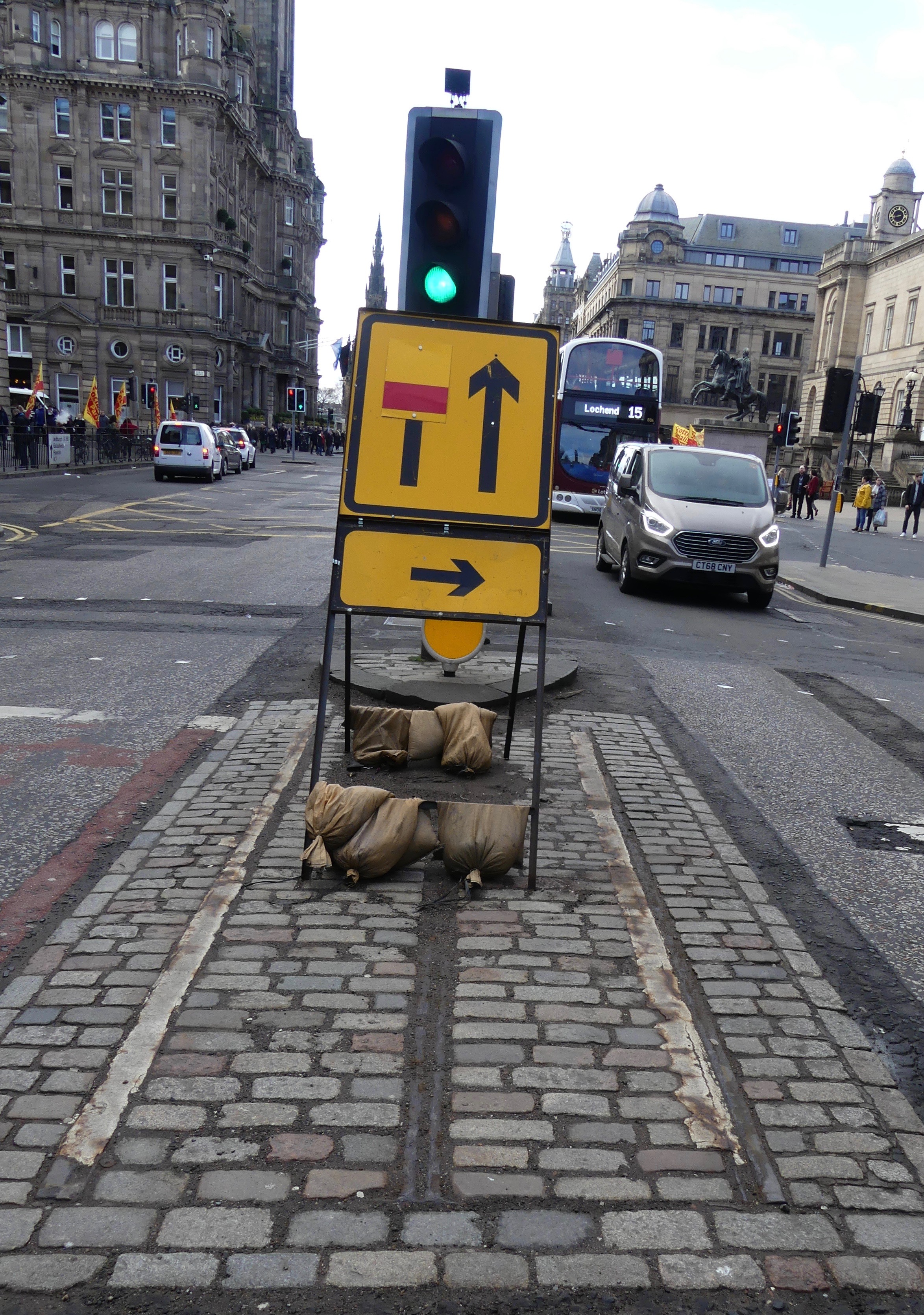
*****
Edinburgh, March 17, 1919
SIR,—The only way to get over all the various difficulties and perplexities of our tramways (power, method, routes) is to abolish them altogether. The tramway is an obsolescent form of traffic. It was introduced when roads were very bad, and the only form of haulage was the horse. Then new powers came in—the cable, and later electricity—but people still stuck to the tramway rails as their one idea. Now with petrol power, and much improved road surfaces, capable of even better and very speedy improvement, we can shake off obsolete ideas. Rails are no longer necessary.
I am entirely with your correspondents who ardently wish for a more rapid and more elastic form of locomotion than we have at present, and it is just for that reason that I urge the abandonment of the hidebound or ironbound tramway. We spent a large sum of money in laying down the cable trams, and we have not yet worked off the initial cost. Now we are asked to spend another huge sum in laying down and equipping another tramway system, which at present war prices will cost very much more than the original cable system.
Is there any other system?
Can this be avoided? And is there any other system of locomotion which will give us what we want? Most decidedly, yes—motor buses. I cannot understand how anyone who has seen the huge population of London or of Paris transported by motor bus, can ever think of laying down rails for a new tramway system in Edinburgh. These capital cities have been most jealous of their beauty and their amenity, and rigorously forbidden any form of tramway in their central regions. Edinburgh prides herself more than either of them on her looks, and her beauty is an asset of infinite value, which attracts visitors from all over the world. Don’t let us destroy that asset for a purely commercial venture. It is unthinkable that we should have a network of overhead wires in our glorious Princes Street, and why should calm and majestic George Street be spoiled by tramways of any description?
The above is a plea for the preservation of our beauty, and our amenity. I want to go further, and give some reasons for the motor bus as the most practical, economical, and business-like arrangement.
Objections to tramways.
Objections to tramways are:—
1. The rails are a nuisance and a danger to every other form of locomotion, foot, horse, bicycle, and motor.
2. The tramway car is an obstruction to all other forms of traffic, because it cannot yield and get out of the way.
3. The tramcar is an obstruction to itself, I mean to its own kind. Observe two or three cars held up at the west end of Princes Street, for anything from a quarter to three-quarters of a minute. Why? Because the car in front is on the same line of rails, and cannot get off, and the others have to sit down and wait until it has turned the corner or passed the junction. With the three motor buses, how different. There would be three stopping places, and each would glide along irrespective of the other, saving on the average, half a minute each time. How many minutes in the day?
4. In the case of the breakdown of one vehicle, just as possible with an electric car as any other, the whole line behind gets held up.
In favour of motor buses.
Points in favour of motor buses are:—
1. Heavy initial cost of installation saved—surely an important item in these days of heavy expense and heavy taxation.
2. Motor chassis, convertible into buses, are now going cheap by the thousand, as released from the Army.
3. All rails done away with, smooth streets, and no unsightly posts and wires.
4. No ugly islands in the middle of our handsome streets, as buses pick up and set down at the pavement edge.
5. The minimum of obstruction to traffic, and in the case of a breakdown, none whatever.
6. Greater speed—watch the Scottish Motor Traction Company’s buses gliding past the cars.
7. Flexibility in changing or extending routes.
(a) Take a big football match at Inverleith or Tynecastle. With trams, there has to be the outward and return journey on the same route, all extra cars causing a formidable obstruction to traffic. Motor buses could go one way and return by another; the same in picking up after the match.
(b) Extending. Example the Zoo. For years we have waited for cheap and handy locomotion to the Zoo. The trams could not do it, because it meant tens of thousands of pounds in initial expenditure. It would be very easy for motor buses to run an extra distance.
9. No unsightly double-deckers.
10. Quieter running. The cable itself is noisy, especially at corners. The electric car is very much noisier than the cable car; very annoyingly so. The motor bus is almost silent.
11. The past two years have proved that coal gas can be successfully used in motors in place of petrol. Our local gas industry aided, and money saved.
12. It is an important point, and a sign of the times, that Mr Pilcher tells us that unless we take care motor buses will kill the trams. It is said that whatever the merits of the motor bus may be for Edinburgh, we must go in for electric cars in order to link up with Leith or Musselburgh. No one in his senses would dream of linking up with the very badly constructed and equipped Musselburgh trams. As for linking up in general, the motor bus can go anywhere, and is therefore free to run to the uttermost part of these or any other systems, at a moment’s notice.
Plump for abolishment.
The recent correspondence has been a decided advance on any heretofore on the subject. The hint of the motor bus is prevalent, even in the official report, and the objection to unsightly wires stronger than ever. Let us be strong and original, and decisive, and let us plump for the abolishment of the tramway car in any form, and the adoption of an up-to-date motor traffic. Edinburgh surely should lead—not drag behind.—I am, &c.
James A. Hope.
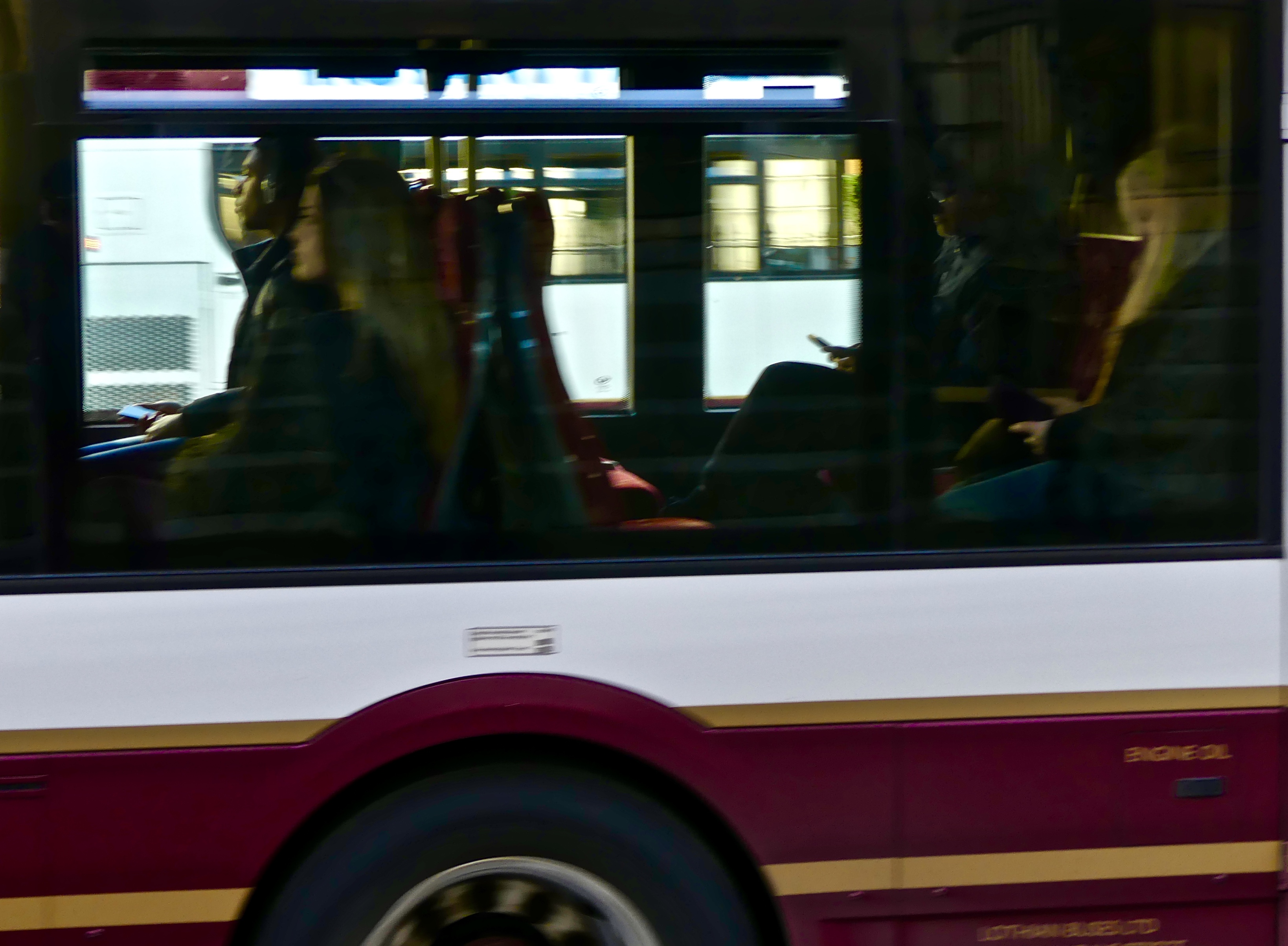
*****
106 Princes Street, Edinburgh, March 19, 1919.
SIR,—I am inclined to agree with your correspondent, Mr James A. Hope, that the best way to get over the tramway difficulty would be to abolish “tramways” with their many complications, and to substitute up-to-date self-propelled motor vehicles all over the city and suburbs.
The London General Omnibus Company has just decided to introduce a new type of vehicle; lighter, faster, and more roomy than the present motor bus. They will carry 40 to 45 passengers, and the rear platform is wide enough to permit of passengers entering and leaving simultaneously.
The adoption of self-propelled motor vehicles would solve all the difficulties.
1. The heavy expense of laying and upkeep, as well as the danger of slippery rails on the streets.
2. No overhead wires or standards will be necessary.
3. Some of the island platforms can be dispensed with, as free vehicles take up and set down passengers at the pavements.
Mr Hope mentions many other points showing the immense advantage of an elastic and mobile form of locomotion, as compared with the obstructions and limitations of the present or any other “tramway” system.
Most important for the ratepayers, the enormous cost of the laying of miles of rails, and costly conduits and standards will be entirely avoided.
Hitherto, the chief objection to motor buses has been the small carrying capacity and difficulty of passengers entering and leaving by such a narrow door. These objections have now apparently been overcome, and our authorities should get full information about the new type of vehicle to be run by the L.G.O.C. before discussing “tramways” farther.—I am, &c.
D. A. Small.
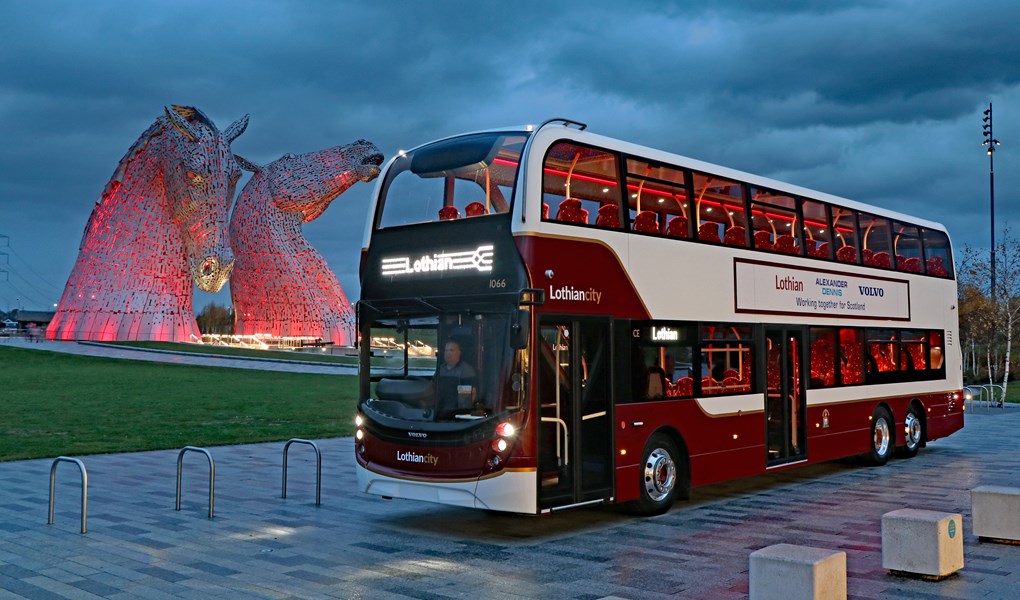
*****
Edinburgh, March 19, 1919.
SIR,—More than 10 years ago the chairman of the largest tramway in the United Kingdom wrote to me thus:—“Tramways are now undoubtedly an anachronism”; and he put his conviction into practice by buying motor buses by the hundred at a time to gradually replace the trams. He is known even better in the United States as an authority on transportation problems than here.
Obsolete, obstructive, too costly.
Seventeen years ago I visited all the great United States cities as far west as Chicago, as the guest of the transportation magnates, in order to report on these problems. Even then in New York (the birthplace of trams) the authorities told me that no more money would be laid out on trams, as they were obsolete, being too obstructive to themselves and other traffic, too slow and too costly; the money was better used in smooth paving.
Note in passing, that in New York (as in other cities) trams are not allowed in the better streets of show parts because of their ugliness. Can one imagine the French allowing trams in the Place de la Concord, the Champs Elysées, or on the Pont Alexandre III.? Princes Street should never have been spoilt by these rows of huge, ugly caravans. For æsthetic reasons poles and wires are not allowed even in the third-rate streets of London, Paris, New York, Washington, D.C. &c. Nothing could be done in these cities to compare with such an outrage as overhead between the Caledonian Station and Abbeymount, or between York Place and Hope Street, via St Andrew and Charlotte Squares.
Let the Town Council go to Glasgow and look at the poles and wires at a triangle junction, and then ask themselves how they would like that at the G.P.O. as a grid to view the Calton Hill through, or at St John’s Church. The G.P.O. is really a five-fold junction, and the many poles, live wires and guard wires, and suspension wires to keep the wires of all those tracks and curves in a centre over the rails, will look like a big, coarse net hung over the open space from Waterloo Place to the North British Hotel.
It is certain that street traffic will soon become very swift, silent, and comparatively safe. Tramways, however modern, cannot fulfil these conditions, and so will retard progress and comfort. It is safe to say that no big tramway schemes will ever again be carried out unless Edinburgh proves the exception by obstructing and disfiguring her streets while saddling herself with another obsolete and comparatively slow transportation system.
The groaning taxpayer.
There is not only the question of getting the speediest system, but to the groaning taxpayer any huge expenditure on needless machinery, cars, wires, posts, rails, conduits, points, boilers, dynamos, buildings, &c. calls for great caution. They can only be paid for by high fares or the rates.
If the London ratepayer, with a population greater than all Scotland, and one which must move about over long distances, and is rich, finds himself with a gigantic financial failure like the London County Council tramways, hung round his neck, how can the Edinburgh ratepayer hope to escape a worse fate in a small city with no great distances to bring dense and long distance traffic? Putting aside the fact that for many, many years the prices of wages and materials will be many times greater than when the L.C.C. trams were put down. If the Town Council went fairly and squarely to find out what it would cost to convert a plain, straight, and junctionless section like the Portobello one, including power and cars for the summer service, they would find things prohibitive. There are plenty big construction firms ready to tender to get work.
Sound finance would be to let the cable system first work off its debt, and to watch the rapid progress going on all over the world by an improved system, meantime spending a comparatively small amount for a hundred or so motor buses (they should be cheap now) to augment the train service. It would also be a good investment to tackle our main streets in the interest of all traffic, and get rid of our noisy, destructive, and dusty paving which is so soon knocked out of shape and has to be re-done.
Health and efficiency.
Colonel J. A. Hope’s list of pros and cons in to-day’s issue is very correct, but he seems to have left out some very pertinent points. A great advantage of the motor bus is that it saves the danger and discomfort of rushing out into the traffic since it picks up and drops at the kerb. This also does away with the continuous delays and wear and tear to the general traffic which occur; because, with trams, at any given moment thousands of people are bolting to or from the pavements all over Edinburgh or crowding round the steps, compelling pulling up to avoid accidents.
Again, a line of trams monopolises the most important part of a street—that is where the fast traffic ought to be, and where the faster traffic should be free to pass the slower. Look from the top of a car along Princes Street on a clear day, and you will see that lines of cars keep everything else off the one part which should be open for speed and passing.
Last, but not least, the laying down of a tramway system means years of blocked-up streets, chaos, and noise, as also the loss of incalculable millions of money by delays of traffic and loss of time to individuals. The minutes lost each day from the obstruction caused by tramcars to even one humble coal cart amount to a big sum in a year, because man, horse, and cart are not being used to full advantage. When it comes to carts and motor lorries with big and valuable loads, to vans and to cabs, carriages or motor cars with people on business, it means a truly colossal loss to the community in 365 days. This is a fleabite to the losses in a city nowadays when it has miles of torn-up and blocked streets for years. So, also, a tram-line is always more or less under repairs, and consequently obstructs.
Practical problems.
This leads to the question, How can you convert to electricity and keep the trams running all the time? Take one section as an example—say from the Caledonian Railway Station to the Braid Hills, which involves Craiglockhart and Marchmont. From my knowledge, six months would be needed for the work. What about the public? Perhaps run motor buses. But, having run a more efficient and comfortable system, why go back to an inferior one costing vastly more? And meantime making the streets nigh impassable for their proper purposes.
I understand a highly-paid expert partly saw this point, and suggested putting the new lines in Princes Street to the south of the old ones. But he seems to have thought so lightly on it that he forgot to say whether he meant to go under or over the Royal Scottish Academy’s temple. In any case this would be very costly, as a tunnel would have to extend from the Conservative Club to Waverley Bridge, while to go above would mean having to clear Queen Victoria’s head—that is, the ramps would have begun much at the same point.—I am, &c.
M.
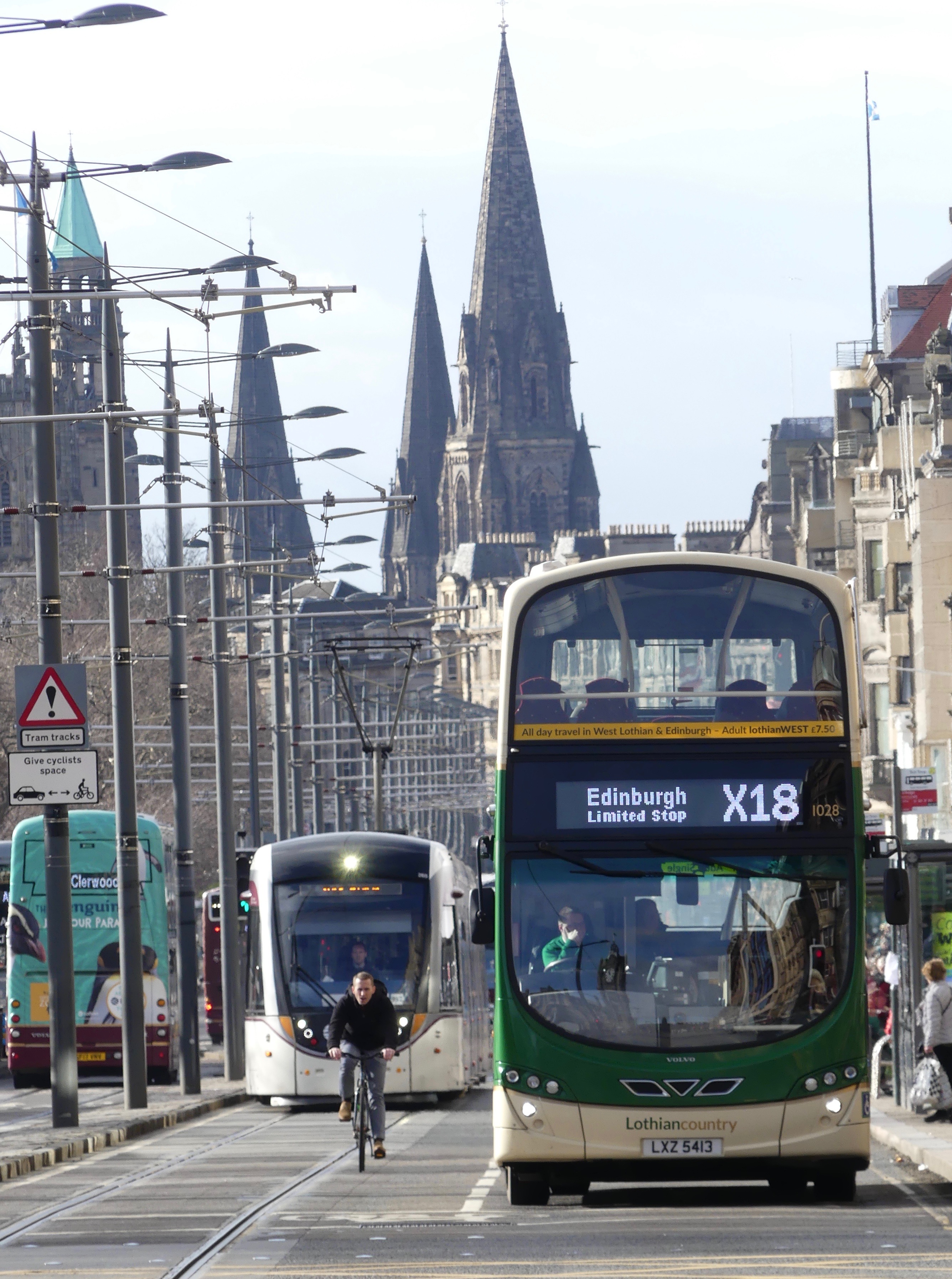
*****
Edinburgh, March 19, 1919
SIR,—Why not get a plebiscite on the opinion of the ratepayers for and against the scrapping of all lines in and around Edinburgh? The bus system would, without doubt, have the stronger support.
The letter in to-day’s issue by Mr J. A. Hope covers the whole situation, and renders further discussion unnecessary.—I am, &c.
Suburbia.
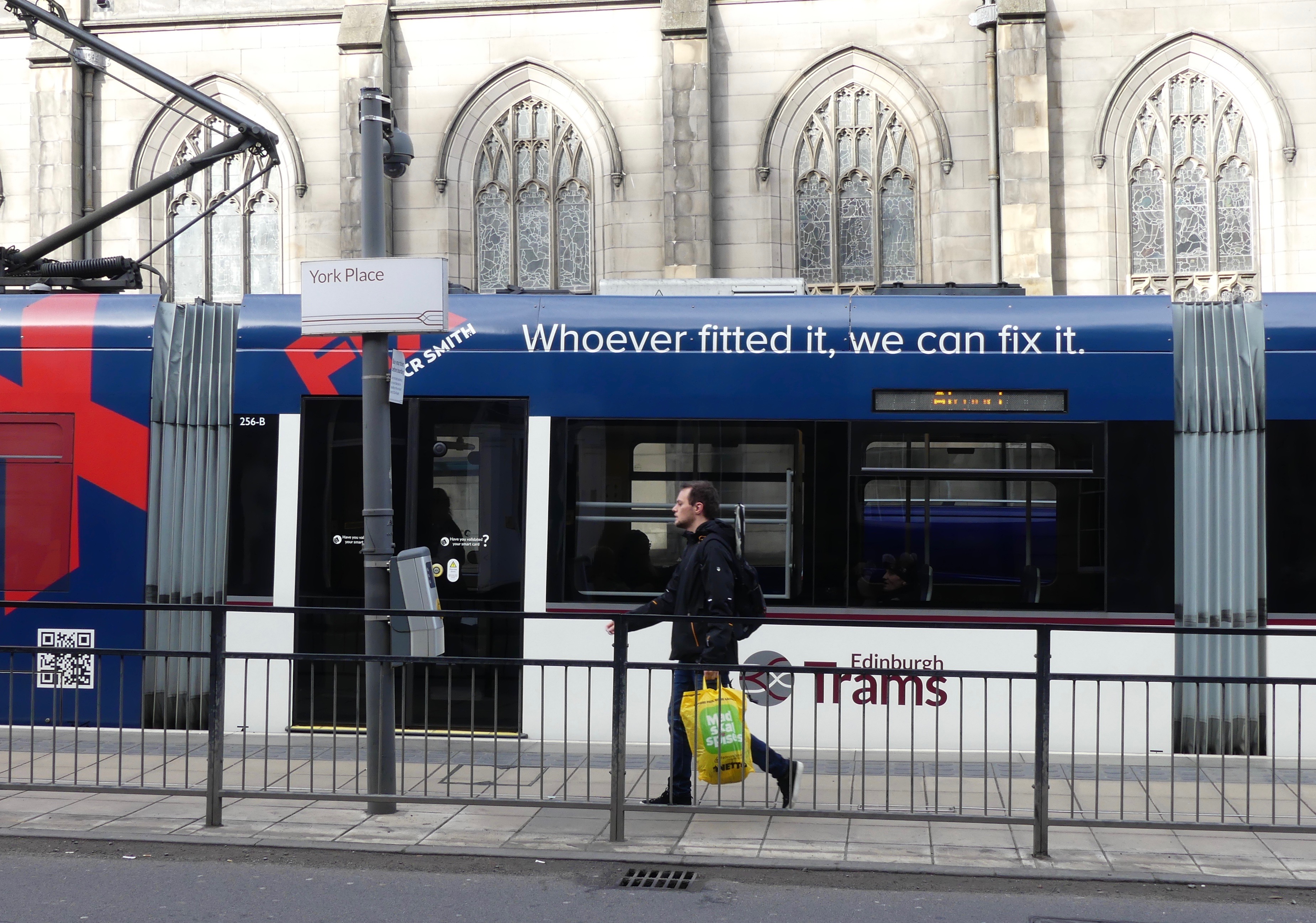
Got a view? Tell us at spurtle@hotmail.co.uk and @theSpurtle and Facebook
-----------


